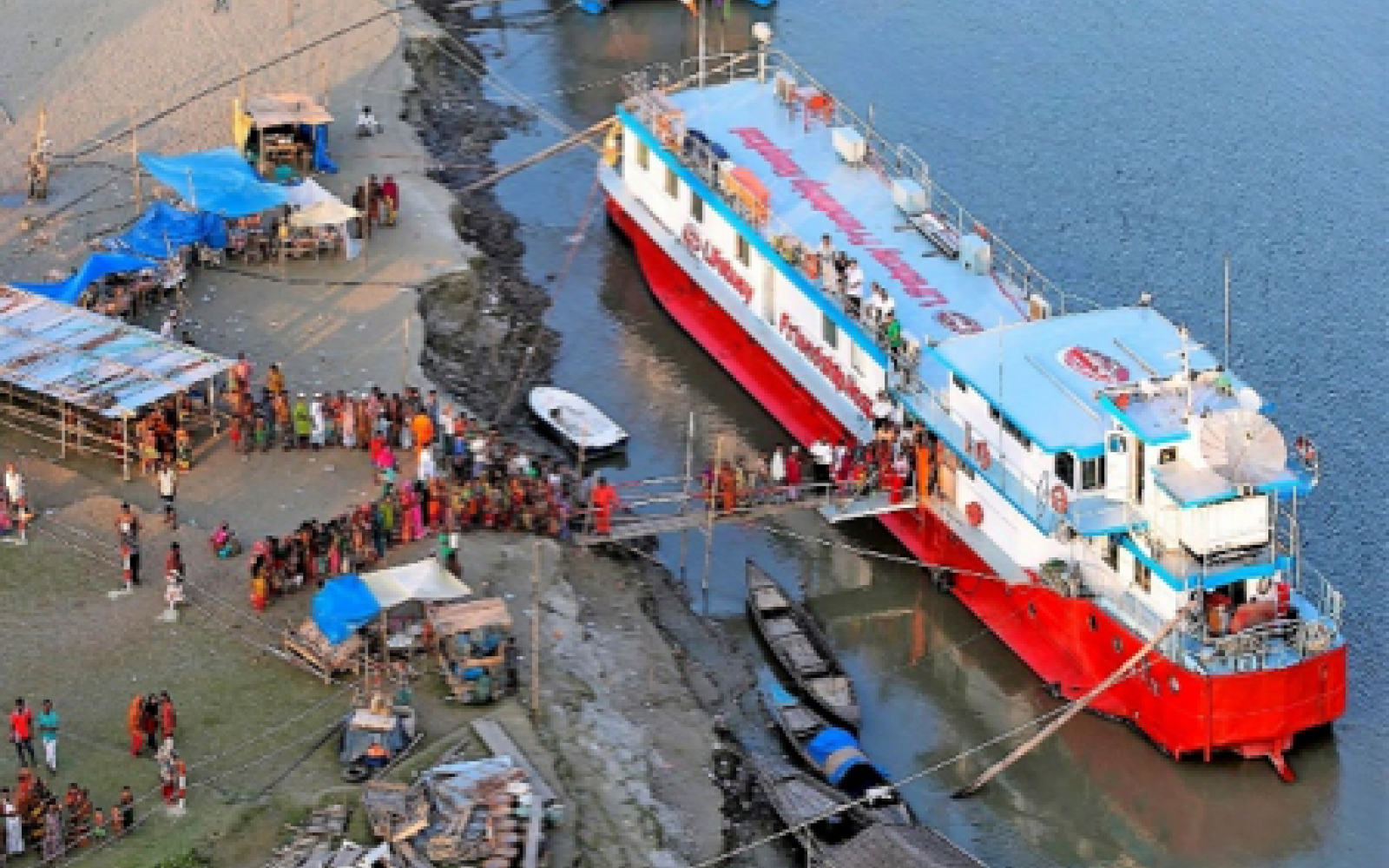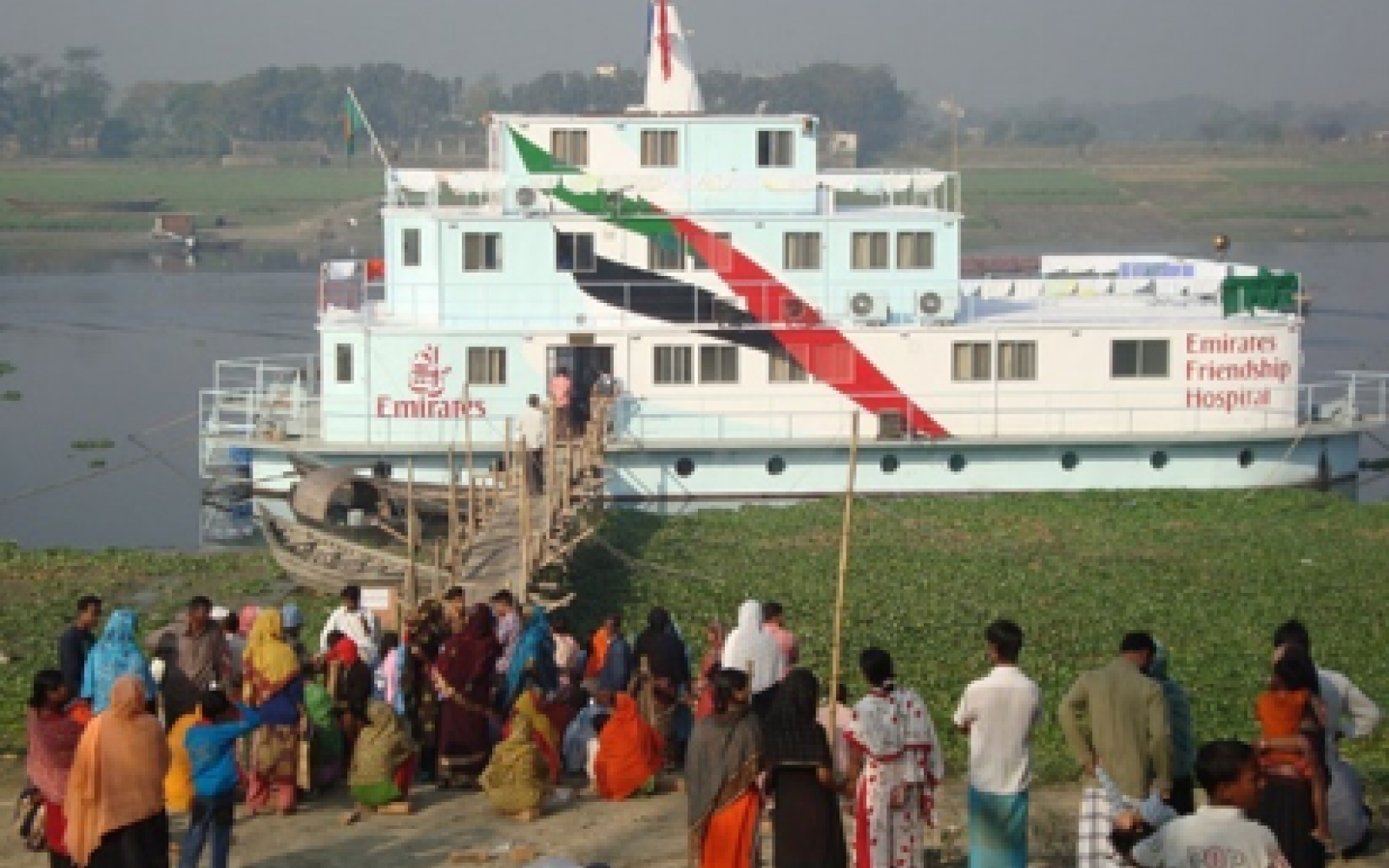Floating Hospitals for Char Dwellers

Runa Khan was awarded the Ashoka Fellowship in 1994 for her work in developing innovative teaching concepts and publishing educational books.
In 1994 when a French adventurer showed up with a retired river barge that he had sailed halfway across the world, Runa Khan realized that boat’s immense potential. In Bangladesh, a delta crisscrossed by infinite rivers and tributaries, millions live at the mercy of the water. On the breast of the Jamuna river, remote moving islands, the chars, that form and break away at the whim of the mighty river, the government is powerless to provide many services. How can one build hospitals and universities where the very land is temporary? There is no electricity, no permanent police or judiciary presence on these islands.
Runa Khan realized that if the boat were to be converted into a hospital, it could bring essential services to millions who have no access to healthcare. At that time no NGO would agree to undertake the project, dismissing it as too ambitious and unlikely to work. The Ashoka fellow eventually realized that the only way to make the project work would be to do it herself. Even though she had no experience in the development sector, Runa dived in and formed her own NGO, Friendship, to run the floating hospital.
Imagine the reaction of locals when they saw an enormous boat painted white and red, with doctors claiming to give miraculous treatment for conditions they had lived with for generations. Living with modern medicine, we know that cataracts, cleft lips, and fistulas can be cured within a short time with simple surgeries. But for these people, these were conditions that left people crippled for life. The isolation is difficult for us to imagine from the comfort of our cities. But in these communities, it was nothing short of a miracle for a person with a cataract to walk out from the hospital cured.

The hospital ship was not only a success, but it was also the starting point of a different way of working. The hospital ship was making an impact, but it couldn’t come close to ensuring health care for the communities in the char areas. Those in areas far away from the hospital were still left without any access to healthcare. Most people were still entirely unaware of the new hospital. So, Friendship started sending out teams of nurses and medics to villages to create awareness and provide basic treatment. These expeditions came to be known as satellite clinics.
Even the satellite clinics could not ensure that a person who was suddenly attacked by waterborne disease or required attention for their pregnancy, would have that help around them. To ensure this, Friendship started to train local women from the chars to be Friendship Community Medic-aides. These women would be on call in their communities to give immediate assistance to those in need, and they would be able to contact the Friendship offices to send for ambulances to those who required to be moved to a hospital. This is how Friendship evolved its three-tier healthcare system that has taken healthcare to 615 villages around Bangladesh.
Runa Khan did not stop at healthcare. The need was in multiple sectors, so she decided to work simultaneously in multiple sectors within these communities. Friendship opened schools, worked on creating economic opportunities and preparing communities for frequent disasters that affected these areas. Today Friendship works in 12 districts in six different sectors. Friendship has added two more floating hospitals to its fleet: Emirates Friendship Hospital and Rongdhonu Friendship Hospital. The success of the model has been recognized by the Islamic Development Bank, who has committed to fund the building and operation of five more hospital ships in different parts of Bangladesh before the project is handed over to the Government of Bangladesh. What started as one project for Runa Khan that nobody believed would work, has now become a possible model for the government to provide healthcare to hard-to-reach communities.
